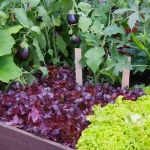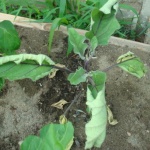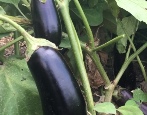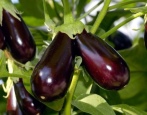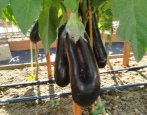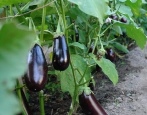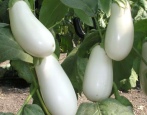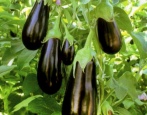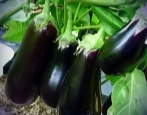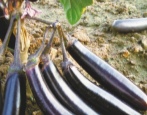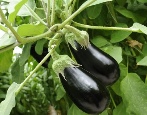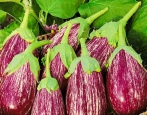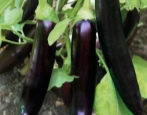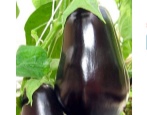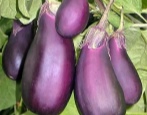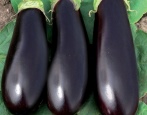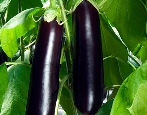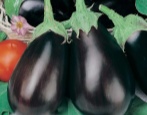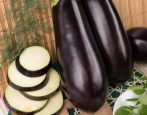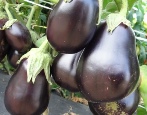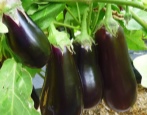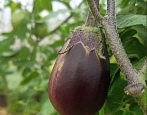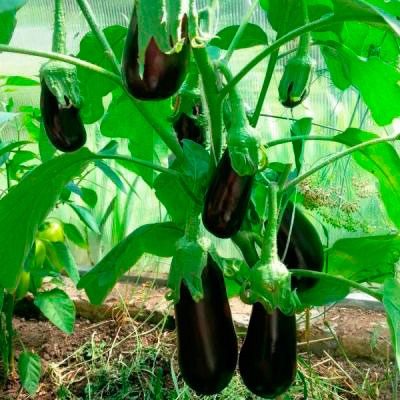
- Year of approval: 2001
- Growth type: vigorous
- Bush height, cm: 170-190
- Fruit shape: cylindrical
- Fruit weight, g: 310-409
- Yield: high yielding
- Fruit color: purple
- Keeping quality: adapted for long-term storage
- Marketability: 92-99%
- Ripening terms: early
Among the many eggplant varieties, one can single out a category intended for cultivation in regions with unfavorable climates, with short and cool summers. One of these is the early maturing hybrid Giselle.
Breeding history
The hybrid with the beautiful name Giselle was the result of many years of work by a group of scientists from ZAO Scientific and Production Corporation NK. LTD "in 1998. After a series of tests, in 2001, the vegetable crop was entered into the State Register of Admitted to Use. The vegetable is cultivated in greenhouses, under film shelters and on garden ridges. Recommended for growing a hybrid in the Central region.
Description of the variety
Giselle is a tall plant that, under favorable conditions, can grow up to 170-190 cm. A powerful bush is characterized by semi-spreading branches, an erect central stem with weak thorniness, moderate thickening with large bright green leaves and a developed root system. During flowering, lilac flowers are formed on the bushes, resembling potato buds in shape.
Characteristics of the appearance of plants and fruits
The Giselle hybrid belongs to the category of large-fruited eggplants. Fruit weight varies from 310 to 409 grams. The length of the vegetable is about 30 cm, and the diameter is 6-7. The shape of the eggplant is aligned - cylindrical. The ripe vegetable has a uniform rich purple cover. The surface of the eggplant is smooth, with a pronounced gloss, without tuberosity and other irregularities. The peel of the fruit is of medium density, elastic and firm.
Ripe eggplants can easily be transported over long distances, and also have good keeping quality without loss of taste and marketability. At a basement temperature of + 1 ... 2 degrees, vegetables can be stored for 21-25 days.
Purpose and taste
The eggplant tastes good. The white pulp is characterized by a firm and fleshy consistency without fiber, voids and wateriness. The vegetable has a pleasant taste, slightly oily, with mushroom notes and a classic aroma. Eggplant pulp contains a small amount of small seeds.
The harvested crop can be used for preparing hot and cold dishes, various snacks, as well as pickling, freezing and canning. In addition, Giselle eggplants are very good baked and stuffed.
Ripening terms
The Giselle hybrid is early maturing. The growing season lasts less than 4 months - 107-117 days. Vegetables ripen gradually, so harvesting should be done every 5-7 days. Harvesting occurs between July and September. You cannot overexpose the fruits, otherwise they will lose their taste.
Yield
The hybrid is declared as a high-yielding hybrid. In greenhouse conditions, up to 10-14 kg of leveled specimens are removed from 1 m2. On the garden bed, the indicator is slightly lower - 7-8 kg. On average, the yield ranges from 11.6-17.6 kg / m2.
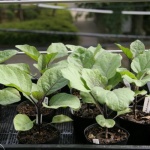
To get a tasty and bountiful eggplant crop, you must first grow strong and healthy seedlings. This culture is considered very capricious, therefore, you need to take care of seedlings when growing at home as correctly and carefully as possible.
Landing scheme
When cultivating a vegetable, do not forget about the subtleties - density and distance between plantings. Planting eggplants is not recommended to thicken - it is enough to plant 3-4 bushes per 1 m2.Landing is carried out according to the standard scheme 60x40 cm.
Growing and care
Eggplant is cultivated through seedlings. For this, mature bushes are selected at the age of 60-65 days with 5-8 true leaves, a strong stem and a formed rhizome. Plants are planted in the second half of May. If you plan to land on a ridge, it is recommended to take into account the temperature regime and the level of soil heating. The best precursors for eggplant will be legumes and pumpkin crops, greens, and carrots.
The agricultural technology of a vegetable consists of basic procedures: watering with warm water every 4-5 days, applying mineral and organic fertilizers (with an interval of 2-3 weeks), loosening and weeding the soil, forming 1-2 stems and tying a bush, thinning side shoots and leaves, prevention of diseases and insect infestations.
Care features: it is better to water the plants in the grooves dug along the beds; loosening should be shallow, since the root system of eggplants is superficial; it is not recommended to allow shading, therefore, extra leaves on the bushes are always removed on time.
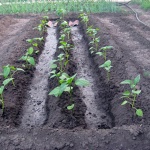
Planting eggplant is one of the most important stages in growing. When choosing a place for eggplants on your site, it is important to remember that this culture should be in warm soil, constantly illuminated by the sun. The plant is also very fond of spacious, open spaces, since its roots can grow over sufficient areas.


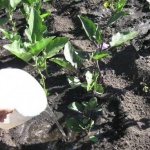
Soil requirements
Giselle, like most of its relatives, prefers light, loose, nutritious, breathable and moist soils with neutral acidity. If you plant eggplants in a garden bed, then it is advisable to prepare the soil on the site in advance - in the fall.
Required climatic conditions
Giselle is characterized by good stress resistance - the hybrid easily tolerates temperature fluctuations, heat and slight cold snaps. The culture should be planted in a sunny place where there is a lot of heat, light and air. In addition, eggplant bushes need protection from drafts.
Disease and pest resistance
The hybrid has increased resistance to many diseases and viruses. Late blight and moniliosis are considered the most dangerous for vegetable crops.
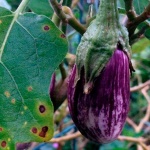
Eggplant is one of the most demanding crops. For its successful cultivation, it is necessary to create optimal conditions, as well as to carry out prevention and fight against diseases and pests. Eggplant often infects both fungal and viral diseases. If treatment is not started on time, you can completely lose the crop.





